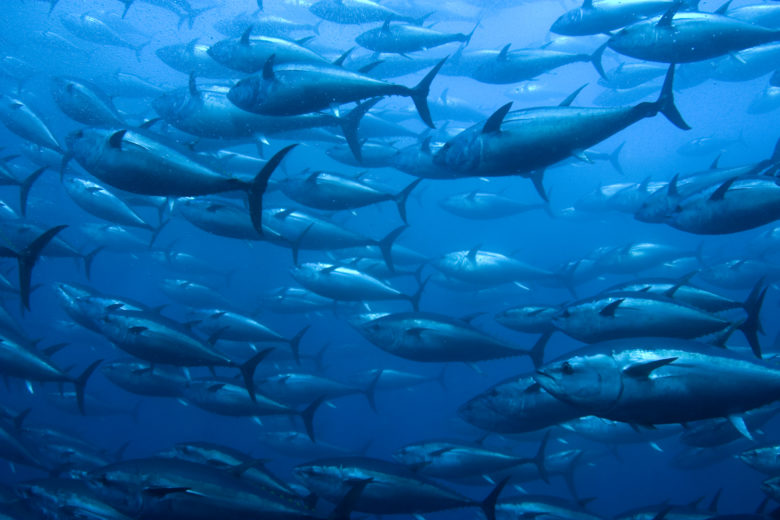
High exposure to methylmercury, a neurotoxin, is tied to brain and nervous system problems, especially in fetuses, infants and young children. As global warming causes water temperatures to rise, methylmercury levels in fish also may be on the upswing.
A recent study, “Experimental and Natural Warming Elevates Mercury Concentrations in Estuarine Fish,” published in PLOS One (March 2013), found warmer sea surface temperatures could result in greater methylmercury accumulation in fish. Researchers observing killifish (small foraging fish that live in brackish waters) found that as water temperatures increased, so did the fish’s appetites. As the killifish ate more, their tested methylmercury levels increased. Higher methylmercury levels could then be passed up the food chain to predatory fish (such as king mackerel, tilefish, swordfish and tuna), then to humans who ingest these fish — a potential concern since the sea surface temperature has been increasing at an average rate of 0.13 degrees Fahrenheit per decade since 1901, according to the U.S. Environmental Protection Agency.
Q: I’ve been hearing about microalgae — what is it and can it replace fat in food?
Microalgea , single -celled microscopic aquatic plants , are generating buzz as a vegetarian source of DHA and EPA, a potential biofuel, and as a replacement for fat and eggs in baked goods. Algal flours, the residue of crushed algae, mimic the texture and mouth feel of fat in croissants, pastry and bread, according to manufacturers, and also are said to help keep gluten-free breads from drying out. But don’t look for algal flours in the supermarket just yet; most are still in development or unavailable to the public.
Q: What is carrageenan?
Derived from red seaweed commonly found in the Atlantic Ocean, carrageenan is a gum used to thicken foods and emulsify liquids. It’s a plant-based substitute for gelatin and binds together ingredients in nondairy milk alternatives, preventing the product from separating as it sits on shelves. Carrageenan is found in some yogurts, low-fat dairy products, cheeses, frozen meals, deli meats and soups, including those labeled “organic” or “natural.”
While carrageenan has been widely used for decades, some researchers claim it causes a harmful immune response in the digestive system, potentially leading to inflammation and digestive issues. However, animal studies have produced mixed results. In 2008, a researcher petitioned the U.S. Food and Drug Administration to reexamine its position that carrageenan is a safe additive. After reviewing the claim, the FDA reiterated its position that carrageenan is safe for human consumption. However, some manufacturers are voluntarily removing carrageenan from their products, and Europe has banned carrageenan from infant formulas.
